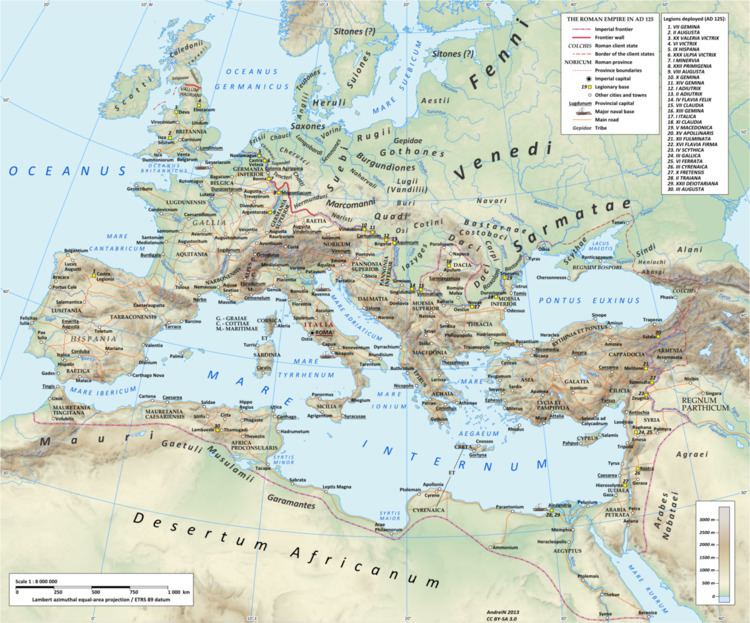 | ||
Legio trigesima Ulpia victrix ("Trajan's Victorious Thirtieth Legion") was a legion of the Imperial Roman army. It was founded in AD 100 by the emperor Trajan (r. 98-117) for service in the Dacian Wars. The legion was active until disbandment of the Rhine frontier in the beginning of the 5th century. Their emblems were the gods Neptune and Jupiter and the Capricorn. Ulpia is Trajan's own gens (Ulpia), while the cognomen "Victrix" means "victorious", and was awarded after the valliant behaviour in the Dacian wars.
The legion's first base camp was in the province of Dacia in the Danube fronier, although it's likely that at least some of its legionaries took part in the Parthian campaigns of Trajan. In 122 they were moved to Colonia Ulpia Traiana (modern Xanten) in Germania Inferior, where they remained for the following centuries. Their main tasks were public construction and police affairs.
In the 2nd century and the beginning of the 3rd century, units of the XXX Ulpia Victrix were allocated in Parthia, as well as Gaul, Mauretania and other Roman provinces, due to the peaceful situation in Germania Inferior.
In the civil war of 193, XXX Ulpia Victrix supported Septimius Severus, who granted them the title of Pia Fidelis ("faithful and loyal").
Crisis Of The Third Century
The legion was used by Emperor Alexander Severus in his 235 campaign against the Sassanids. It was almost certainly involved in Gallienus's wars against the Franks in the 250s. L. Petronius Taurus Volusianus who later became Praetorian Prefect in 260 and Urban prefect in the mid-260s was Primus Pilus of the legion at this time. It supported the Gallic Empire of Postumus (260-274) and no doubt suffered great losses when Aurelian overthrew Tetricus I in a bloody battle at the Catalaunian Fields (Châlons-en-Champagne) in 274.
With the re-organization of the Roman Army (Constantius I Chlorus), the legions guarding the border lost their importance to the comitatus, the main, cavalry-based army behind the limes. The collapse of the Rhine frontier after 408-410 marked the end of the legion history.
